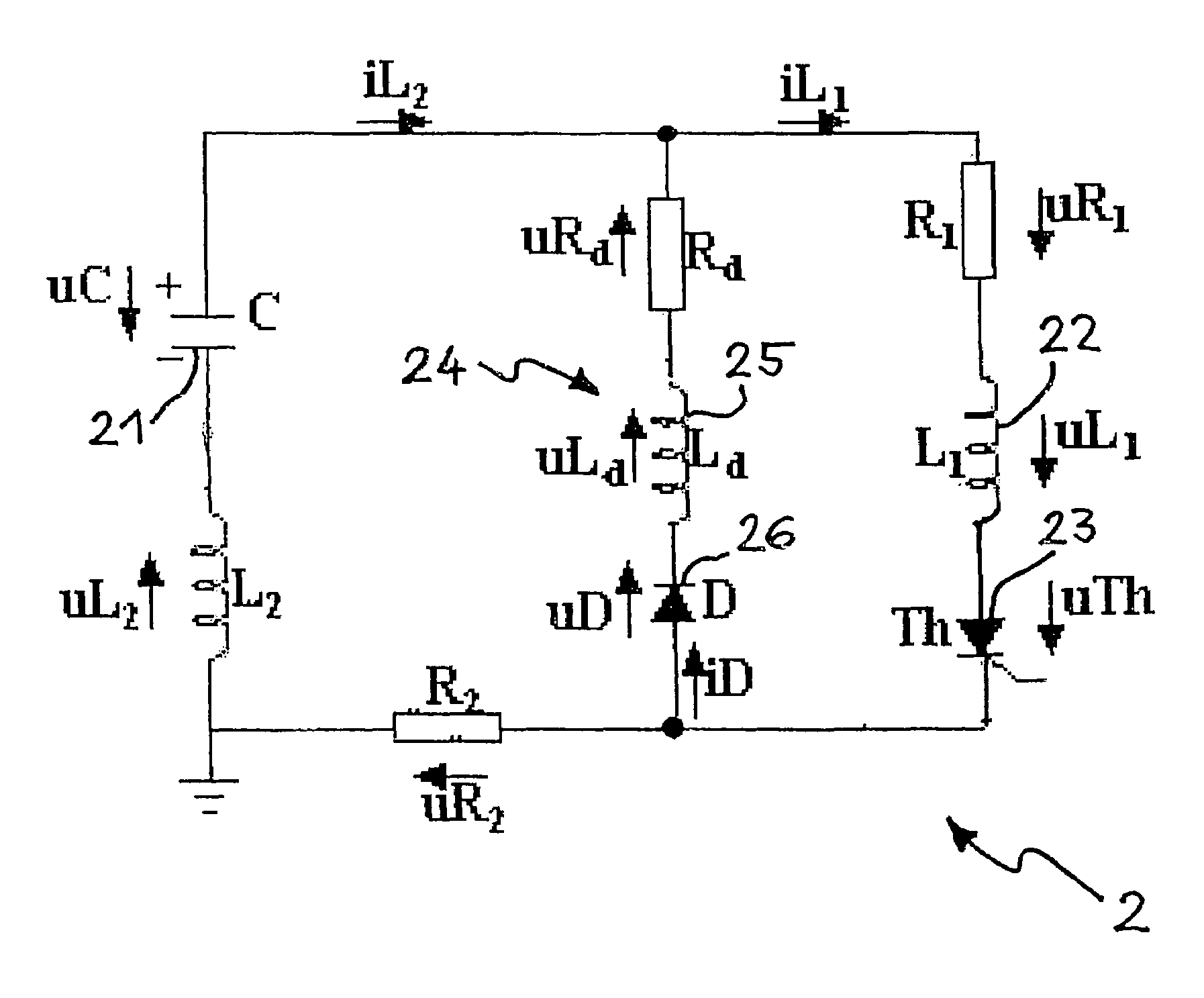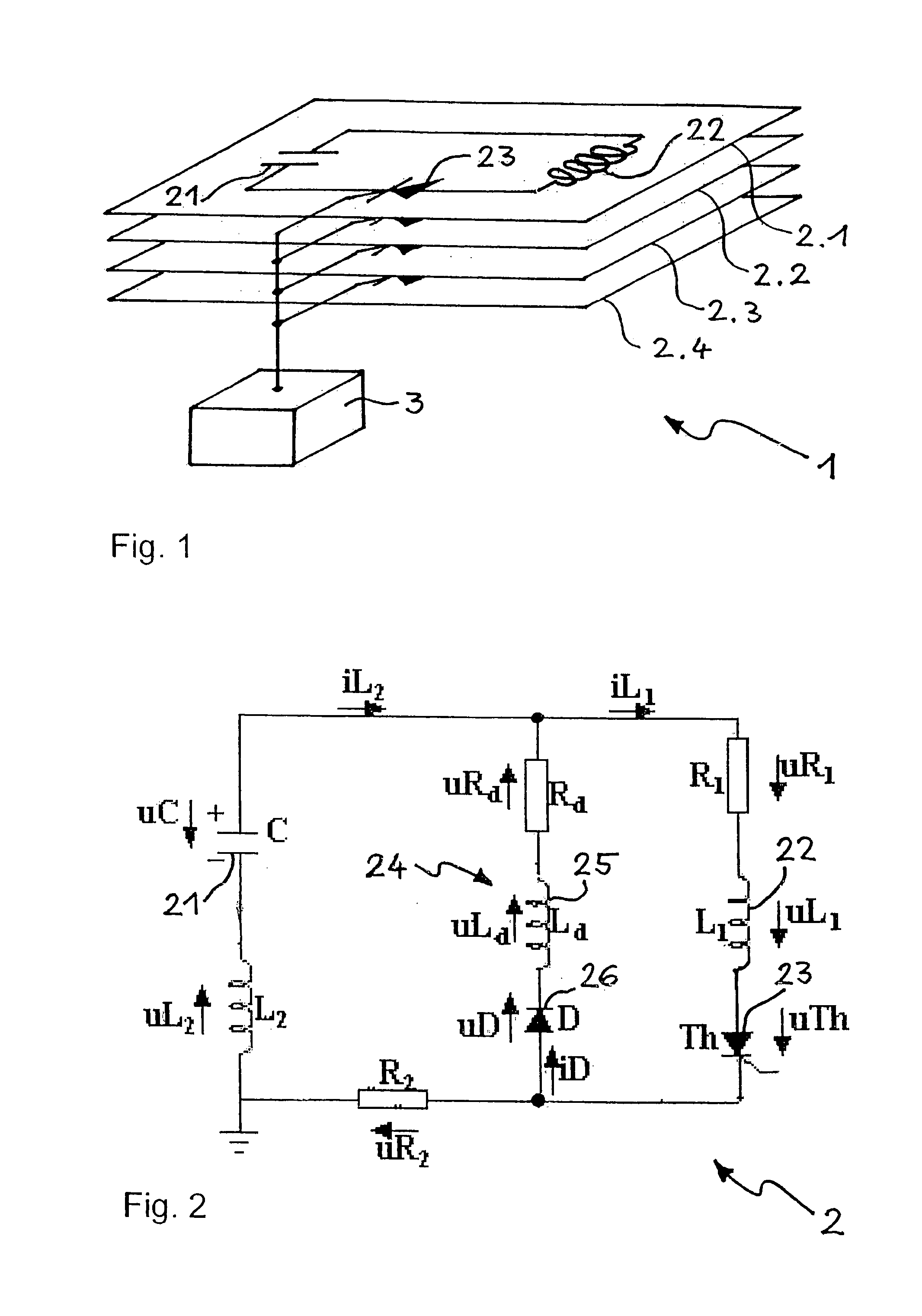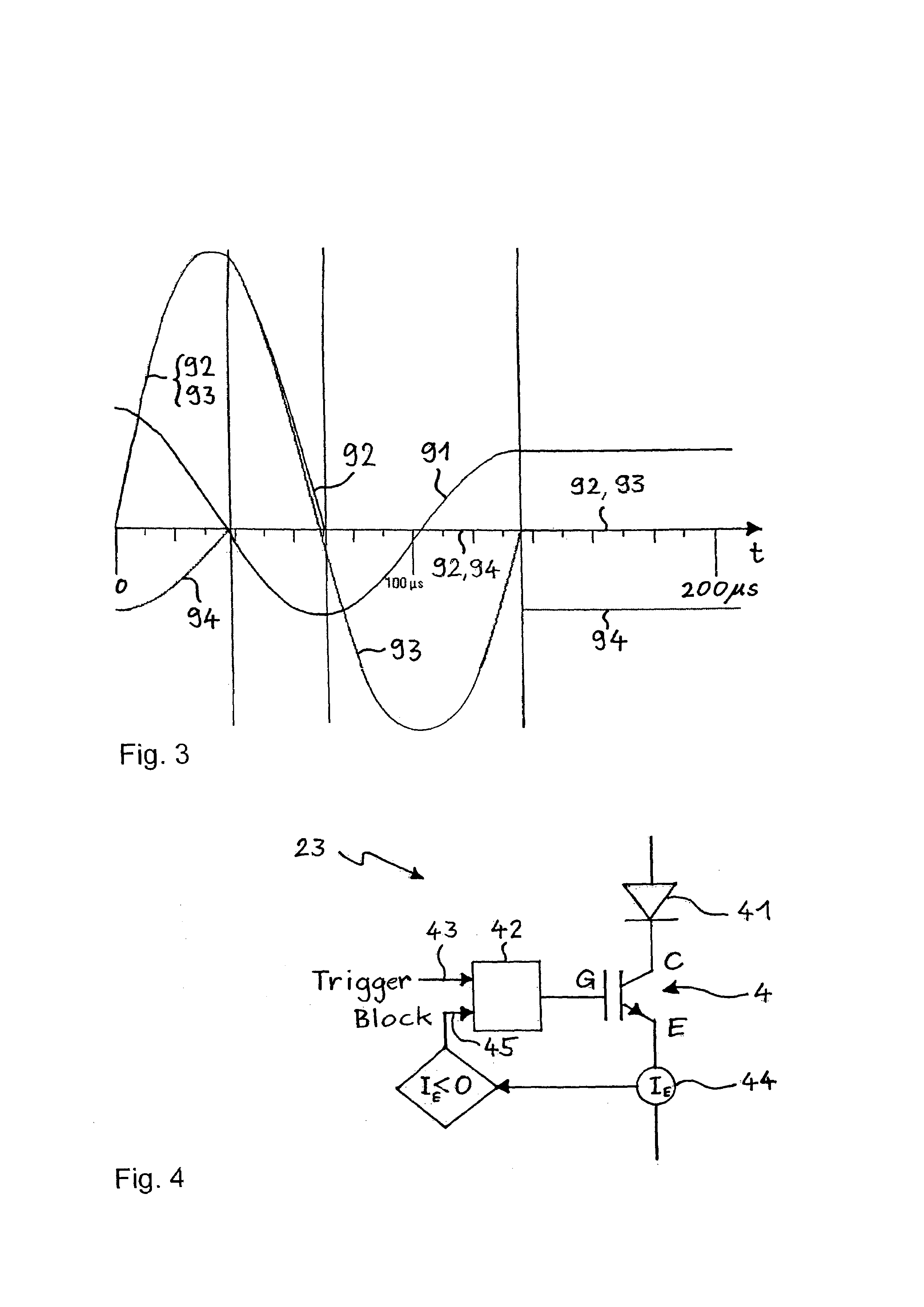Device and a method for magnetizing a magnet system
a magnet system and magnetization technology, applied in the direction of electromagnets, inductances, electromagnets without armatures, etc., can solve the problems of affecting the efficiency of magnetization, and unable to achieve high cycle frequency, etc., to achieve high cycle rate and high productivity
- Summary
- Abstract
- Description
- Claims
- Application Information
AI Technical Summary
Benefits of technology
Problems solved by technology
Method used
Image
Examples
Embodiment Construction
[0029]Important elements of one embodiment of a device 1 according to this invention are shown schematically in FIG. 1. The device 1 comprises several, preferably identical pulse-generator circuits 2.1-2.4. Four pulse-generator circuits 2.1-2.4 are shown in the embodiment of FIG. 1. There may however be more or less. Each pulse-generator circuit 2.1-2.4 comprises a capacitor element 21, preferably a foil capacitor, and a magnetization coil 22 electrically connected to the capacitor element 21. Each pulse-generator circuit 2.1-2.4 further comprises a switch element 23, for example a thyristor, on whose actuation a pulse-like discharge of the capacitor element 21 via the magnetization coil 22 may be activated, and thus the build-up of a magnetic field in the magnetization coil 22. The device 1 also comprises actuation means or an actuator 3 from which the switch elements 23 of the at least two pulse-generator circuits 2.1-2.4 may be simultaneously actuated. Actuators are known to thos...
PUM
| Property | Measurement | Unit |
|---|---|---|
| magnetization | aaaaa | aaaaa |
| voltages | aaaaa | aaaaa |
| inductance L1 | aaaaa | aaaaa |
Abstract
Description
Claims
Application Information
 Login to View More
Login to View More - R&D
- Intellectual Property
- Life Sciences
- Materials
- Tech Scout
- Unparalleled Data Quality
- Higher Quality Content
- 60% Fewer Hallucinations
Browse by: Latest US Patents, China's latest patents, Technical Efficacy Thesaurus, Application Domain, Technology Topic, Popular Technical Reports.
© 2025 PatSnap. All rights reserved.Legal|Privacy policy|Modern Slavery Act Transparency Statement|Sitemap|About US| Contact US: help@patsnap.com



